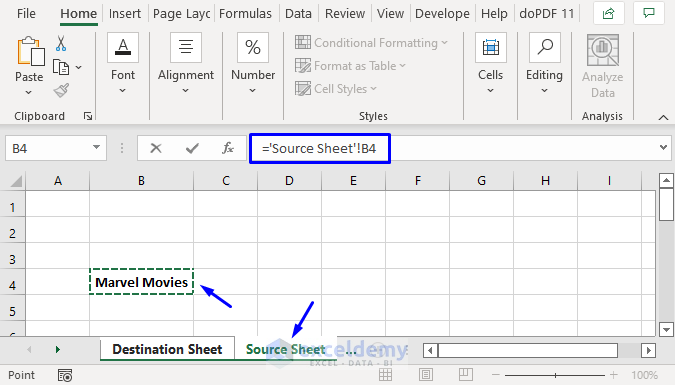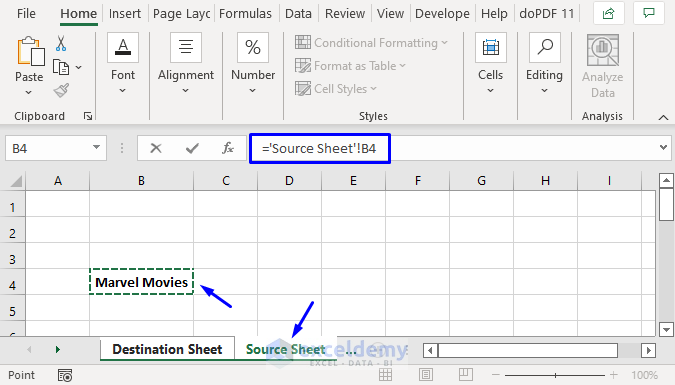3 Easy Ways to Link Excel Sheets Instantly

In today's data-driven world, the ability to efficiently manage and link data across various spreadsheets is crucial for productivity and accuracy. Whether you're a financial analyst, a project manager, or just someone trying to organize personal finances, knowing how to connect your Excel sheets can revolutionize your data handling processes. Here, we'll explore three straightforward methods to link Excel sheets instantly so that you can streamline your workflows.
Understanding the Basics of Linking Sheets

Before diving into the specific methods, it’s important to grasp why linking sheets is beneficial. Linking Excel sheets can:
- Automate data updates: When one sheet changes, linked sheets update automatically.
- Reduce errors: Minimizes manual data entry, hence reducing the chance of errors.
- Save time: With interconnected sheets, you only need to update data in one place.
- Improve data integrity: Data consistency is maintained across different documents.
Method 1: Using Cell References

The simplest way to link data between sheets is by using cell references. Here’s how you can do it:
- Open both workbooks: Have the source and destination workbooks open.
- Select the cell: Click on the cell where you want to place the linked data in the destination workbook.
- Enter the formula: Type an equal sign (=) followed by selecting the cell or range from the source workbook. For example, if you’re linking cell B2 from Sheet1 in Book1 to Sheet2 in Book2, your formula will look like this:
=Book1!Sheet1!B2 - Press Enter: The destination cell will now display the value from the source cell, and any changes in the source will automatically reflect here.
💡 Note: When using cell references, ensure that the source workbook remains in the same location or is always open to avoid broken links.
Method 2: Creating Named Ranges for Linking

Named ranges offer a more structured way to manage data links. Here’s how:
- Define the named range: In the source workbook, select the range of cells you wish to link, then go to Formulas > Define Name and give it a name, say “SalesData”.
- Reference the named range: In the destination workbook, type an equal sign, then enter the workbook name followed by the exclamation point and the named range, like so:
=[Book1]Sheet1!SalesData - Drag the formula: If needed, drag the formula to link multiple cells to different ranges or cells in the source sheet.
| Step | Description |
|---|---|
| 1 | Name the range in the source workbook |
| 2 | Link the named range in the destination workbook |

🔔 Note: Named ranges provide a clear description of what data is being referenced, enhancing document readability.
Method 3: Using Excel’s Hyperlink Feature

For a more interactive linking experience, you can use hyperlinks:
- Select the cell: Choose the cell where you want to insert a hyperlink in the destination workbook.
- Insert a hyperlink: Right-click, choose “Hyperlink,” or go to Insert > Link and link to either an external file or a location within the workbook.
- Link to a location: If linking to another sheet within the same workbook, you can specify the cell reference or range.
- Customize the link: Optionally, you can add a custom text or tooltip to describe the hyperlink’s destination.
Hyperlinks are particularly useful for creating navigational shortcuts within large spreadsheets, allowing users to jump between related data sets or reports with ease.
📌 Note: Remember that hyperlinks are not dynamic; they do not update if the linked data changes.
Linking Excel sheets isn't just about convenience; it's about creating a robust, interconnected system where data flows seamlessly. By mastering these techniques, you can reduce manual work, ensure data consistency, and enhance your overall productivity. Whether you're using simple cell references, named ranges, or hyperlinks, each method offers its unique benefits tailored to different scenarios in Excel usage.
How can I ensure my links don't break?

+
Keeping source files in a stable location, using relative paths when possible, or embedding the data within your workbook can help prevent broken links.
What's the best method for linking Excel sheets?

+
The best method depends on your specific needs. Cell references are quick for one-off links, named ranges for recurring references, and hyperlinks for navigation purposes.
Can I link to Excel sheets from different formats or software?

+
Yes, Excel supports various file formats for linking, but compatibility might vary. Some file types might require conversion or could lead to errors if not fully supported.
By utilizing these methods for linking Excel sheets, you’ve unlocked a powerful feature in Excel that will significantly improve your data management and reporting capabilities. Remember, mastering these skills will not only save you time but also ensure that your work remains accurate and up-to-date across all your linked documents.



